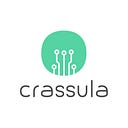With the constantly evolving marketplace and development of new technologies, many companies face the difficulty of staying ‘in the game’ with their initial products as their life cycle declines. In order to differentiate from rivals, grow and generally survive, one of the common strategies is new product development. However, only 29% of new product introductions are successful. The solution for that is a systematic development and testing. Today, we are introducing you to the 5 essential stages of NPD.
Why systematic development is necessary? A product is a bundle of attributes. Each customer chooses a product for the attribute that is most important to them. For companies to create a product that is going to be favored by the majority of their potential customers, preferences for attribute levels have to be decomposed (often statistically) from the overall evaluation of the product. This is done in 5 following stages:
1.Opportunity Identification
Before starting working on the product, companies have to clearly define their market. Whether they decide to choose a Cost Leadership strategy or find a niche and differentiate from their competitors through that, they need to examine opportunities that market offers and generate ideas that could help the company enter that market. This can be done through focus groups (unstructured interviews with a group of people familiar with the market), gathering secondary data (consumer reports), internal industry analysis, open innovation, crowd-sourcing, and co-creation — integrating consumers into the process of ideas generation.
2.Design
Creating a new product development design is one of the most challenging tasks of NPD. After the variety of ideas were created in the first stage, the question of which products should actually be brought to the market arises. This often refers to a marketing research problem, that looks at focus groups or customer opinion results and identifies which products and attributes are the most preferred and therefore profitable.
3.Testing
Once the hardest part of product idea development and design comes to an end, it is necessary to test your results. Even though the company’s potential customers might have been involved in the idea generation process, the small size of the customer sample cannot represent the whole market. This is where advertising and product testing come into play. At this stage, companies have the opportunity to test the demand for a new product on different markets, using pretest and prelaunch forecasting — doing a one-shot launch and recording the response of the market.
4.Introduction
After the new product successfully got through the testing stage, it is time to plan the actual launch. By this time, the product’s target audience had to be clearly defined, but other essentials might have been left — companies have to make sure their innovative product is validated and has an online identity. It is also important to know the product’s buyer journey in order to forecast its long-term success. For these purposes, tracking of consumer’s response and demand for the new product is essential at all stages of introduction.
5.Life-Cycle Management
The introduction was a success! But the NPD work does not stop there — now, it is time for continuous monitoring. The first four stages have given the company a lot of valuable data that can be used. In order to keep the product’s life-cycle active and on the rise, a regular market response analysis should take place with marketing mix tuning to adapt to changing customer needs have to be done.
The systematization is key here. Regular communication with company consumers and lookout for competitors’ emerging solutions takes a considerable amount of time but is crucial for the company to survive.
Have something to say about our products? Drop Crassula an email to hello@crassula.io
